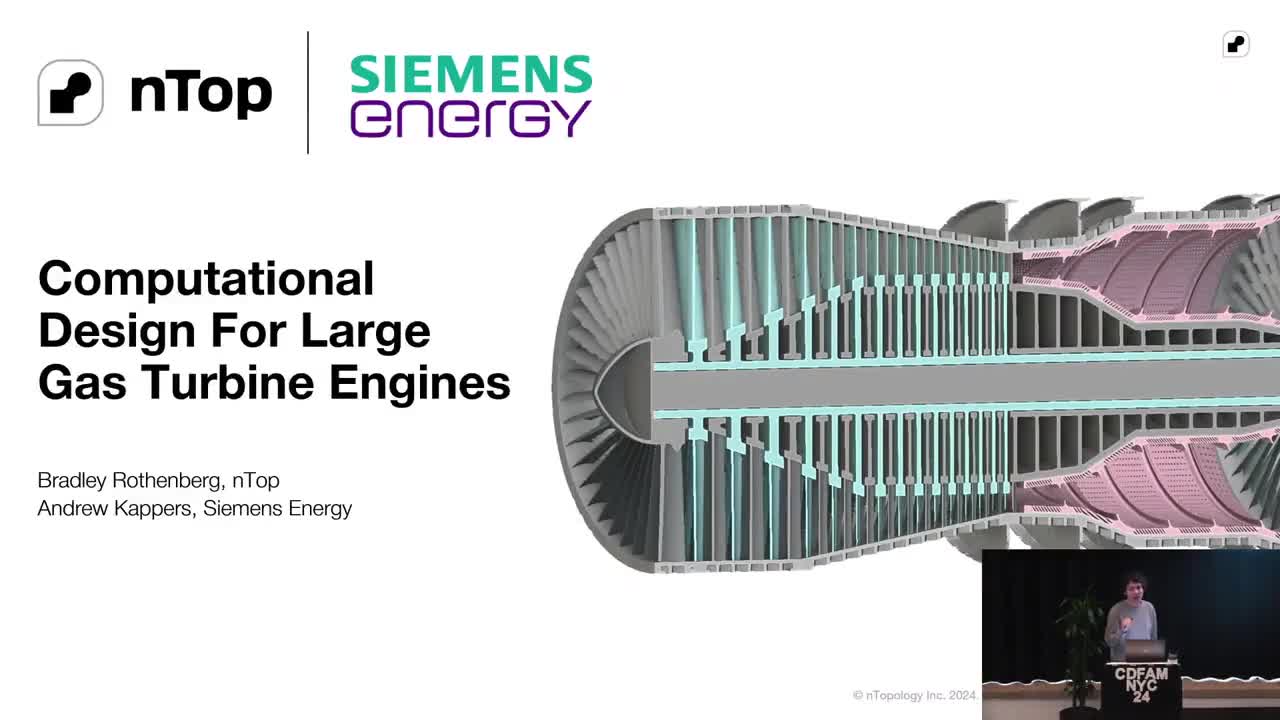Guide to lattice structures in additive manufacturing

Written by nTop
Published on April 28, 2022
Lattice structures are becoming increasingly common in product design. But what are they exactly, and how can you take advantage of them to develop the next generation of high-performing 3D printed products? This article guides you through the basics of lattice structures to get you started.
What are lattice structures?
Simply put, lattice structures are repeated patterns that fill a volume or conform to a surface. In engineering design, lattices are cellular materials—often inspired by nature—that consist of beams, surfaces, or plates that fit together following an ordered or stochastic pattern.

Four types of lattice structures; a beam lattice, a TPMS lattice (gyroid), a honeycomb lattice, and a stochastic lattice (Voronoi).
Lattices are one of nature's fundamental building blocks. The honeycomb of beehives or even the internal structure of bones are examples of biological lattices. In engineering, lattices have long been a cornerstone of lightweight design, with applications ranging from the Eiffel Tower to the sandwich panels of aircraft wings.
The unit cell is the most basic repeating structure of a lattice. The unit cell structure defines the type of the lattice. To create a lattice, unit cells are arranged in space using a cell map. Cell maps can be rectangular, cylindrical, spherical, or even warped to conform between two faces.
The lattice properties (mechanical, thermal, acoustic etc.) are determined by the lattice type and other design parameters, such as the unit cell size and the thickness of the beams or surfaces.
Types of lattice structures
There is a vast array of lattice structures and several ways to create lattices.
- Lattices can be periodic, non-periodic, or stochastic.
- They can consist of beams, plates, or Triply Periodic Minimal Surfaces (TPMS).
- They can fill a volume or be applied on a surface.
- They can be trimmed to a design space or conform to it.
- They can be generated based on a mesh, a CAD body, or directly as an implicit body.

Overview of lattice structure types that you can generate in nTop.
For periodic lattice structures, the unit cell type determines most of the lattice properties. There is a wide range of unit cell types, each of which will be appropriate for different applications. As a rule of thumb:
- Beam lattices can offer high stiffness-to-weight or be elastic and compliant.
- TPMS lattices offer all-around good mechanical properties.
- Honeycombs and plate lattices offer high stiffness in a specific direction.

A selection of unit cells that are available in nTop.
Architected materials and lattice structures
Architected materials are engineered structures that achieve a targeted and controlled physical response. Lattices enable you to create these metamaterial structures to control a part's thermal, electromagnetic, mechanical, or biological characteristics. In other words:
With architected materials, you can change a product's behavior by altering its geometry at a mesoscale level instead of its material microstructure.
3D printed lattice foams are an example of architected material. By controlling the design parameters of a lattice, like the beam thickness or cell size, you can create foam-like structures with stiffness that varies throughout the part. However, these structures are manufactured from the same base material and in one piece.
Lattice structures & additive manufacturing
Today, lattice structures are becoming more common in product development because of the rise of additive manufacturing.
It is possible to manufacture simple lattices using traditional manufacturing methods like CNC machining, welding, or casting. For example, the core of the sandwich panels used on an aircraft's skin is a honeycomb structure manufactured by welding together thin strips of aluminum.
However, additive manufacturing allows you to directly print structures with high complexity and inherently small features more cost-effectively. The applications we will examine in the next section are only possible using additive manufacturing.

Additive manufacturing build plate with 3D printed spinal implants that feature a stochastic lattice that promotes osseointegration.
Benefits and applications of lattice structures
Lattice structures offer high stiffness, surface area, elongation, energy absorption, and porosity. Here are a few ways to take advantage of these five main characteristics for engineering product development.
Lightweighting
Design engineers often leverage lattice structures for lightweighting aerospace or automotive components, industrial machinery, orthotics, and prosthetics to reduce part weight while retaining structural integrity.
Latticing enables you to reduce solid mass without compromising on performance. Using a shell and lattice infill approach, 50% or higher weight reductions are not uncommon. Less material also reduces manufacturing costs, making production with additive manufacturing economically viable.
Another benefit of lattice structures in lightweighting applications is that they can be highly resilient to damage. This property makes them suitable even for critical components where the part must endure significant loads.

Using the “shell & lattice” approach, Aerojet Rocketdyne reduced the weight of this spacecraft quad thruster block by 67%.
3D printed foams for cushioning
Polymer lattice structures can deform and spring back to their original shape, behaving like foam. 3D printed foams are often superior to traditional ones because their shape and stiffness can be easily customized or varied throughout the part.
You can use these 3D printing foams to create cushioning for seats and saddles, sports equipment, and even inner liners of prosthetic devices.

The inner liners of prosthetic devices are an excellent application of 3D printing foams; they increase comfort while improving breathability and durability.
Energy absorption
Lattices can also be tuned to create high energy or shock absorption structures. For example, lattices can improve a product's impact absorption properties and replace traditional foams in protective equipment and helmets.
Other lattice structure applications include vibration dampening and noise absorption. This property is interesting for uses ranging from sound engineering for speakers and headphones to noise control in vehicles or industrial equipment.

3D printed Pickle ball paddle with lattice core for sound absorption.
Thermal management
Heat transfer rate is proportional to the available heat transfer area, and lattice structures naturally provide a large surface area. Specifically, gyroids, a type of TMPS lattice, are especially useful for thermal management and heat exchanger applications.
Gyroids have a high strength-to-weight ratio and naturally separate the flow into multiple interweaving channels or domains while providing a substantial surface-to-volume ratio. This makes gyroids effective for creating more compact heat exchangers that offer higher efficiency.
Lattice cores are the heart of many 3D printed high-performance heat exchangers that find applications in aircraft and road vehicles, industrial facilities, electronics cooling, and precision manufacturing.

The flow guide of this cold plate for power electronics was created by warping a gyroid TPMS lattice; they increase the heat transfer area and guide the flow along the channel.
Osseointegration
Biomedical engineers use lattices to create trabecular structures that promote bone growth of orthopedic implants. Trabecular structures improve the fusion of orthopedic implants with the human body, leading to improved osseointegration and better patient outcomes.

The porous lattice structure of this product family of orthopedic implants promotes bone growth and accelerates patient rehabilitation.
Unique textures
In industrial design, engineers can use both volume and surface lattices to create unique textures to improve the aesthetics and functionality of a product. For example, textures improve the grip of sports equipment like tennis rackets.
Textures can also offer a unique, consumer-grade look and feel, which can be relevant to a wide range of products, from medical devices to consumer electronics and wearables.

The texture of this 3D printed earpiece was generated using lattice structures to create a unique industrial design aesthetic.
Software for lattice generation
To quickly and efficiently create lattice structures, you need software that bypasses the bottlenecks of traditional modeling technologies.
nTop is an advanced design engineering platform that features GPU acceleration to make lattice generation fast and easy. The software allows you to preview design changes in real-time and rebuild even highly complex lattices in seconds.
With nTop's field-driven design features, you can control the parameters of your lattices at every point in space and optimize them to meet your performance targets. nTop's reusable workflow features allow designers to automate design tasks like lattice generation.

nTop
nTop (formerly nTopology) was founded in 2015 with the belief that engineers’ ability to innovate shouldn’t be limited by their design software. Built on proprietary technologies that upend the constraints of traditional CAD software while integrating seamlessly into existing processes, nTop allows designers in every industry to create complex geometries, optimize instantaneously, and automate workflows to develop breakthrough parts and systems in record time.




